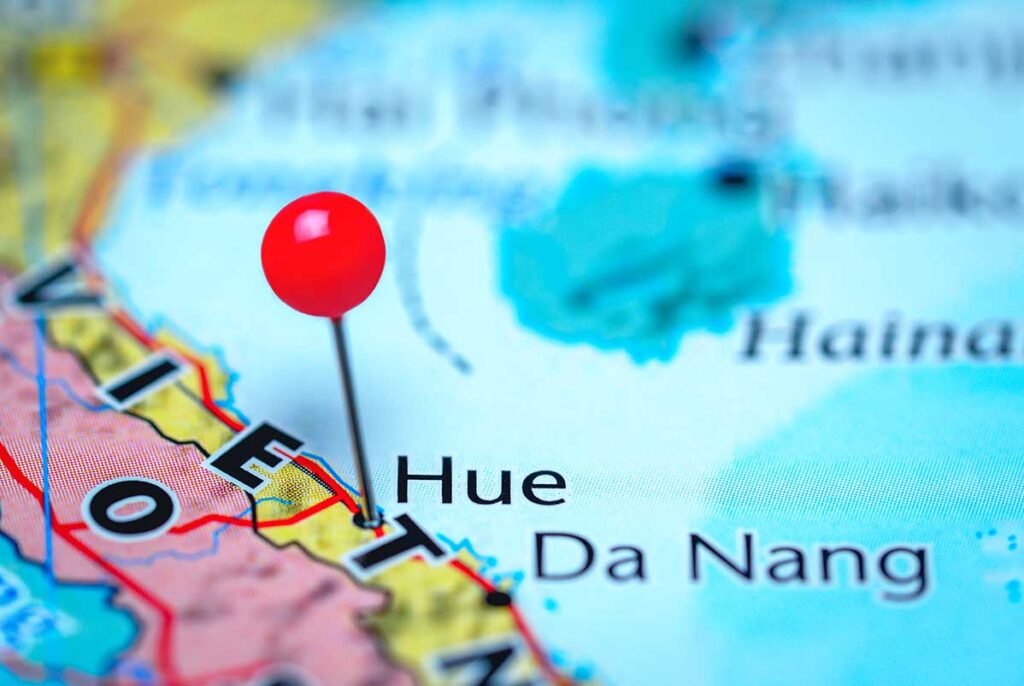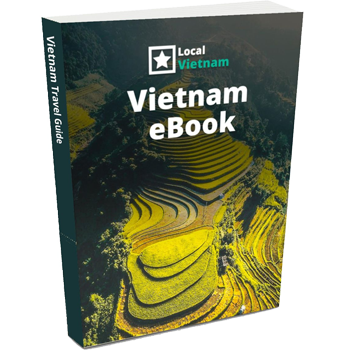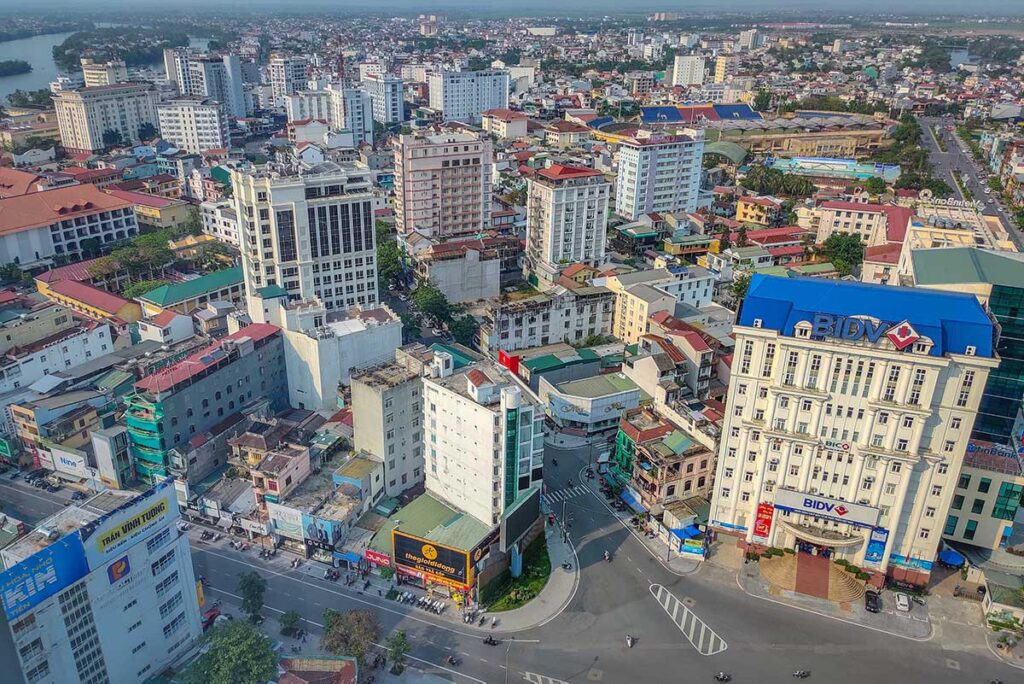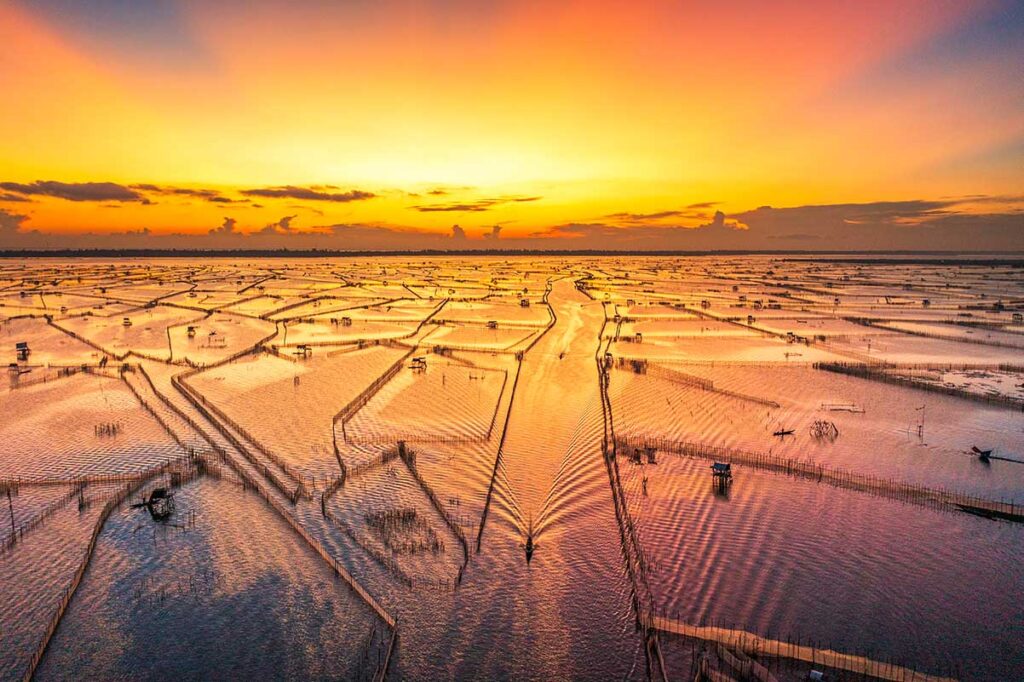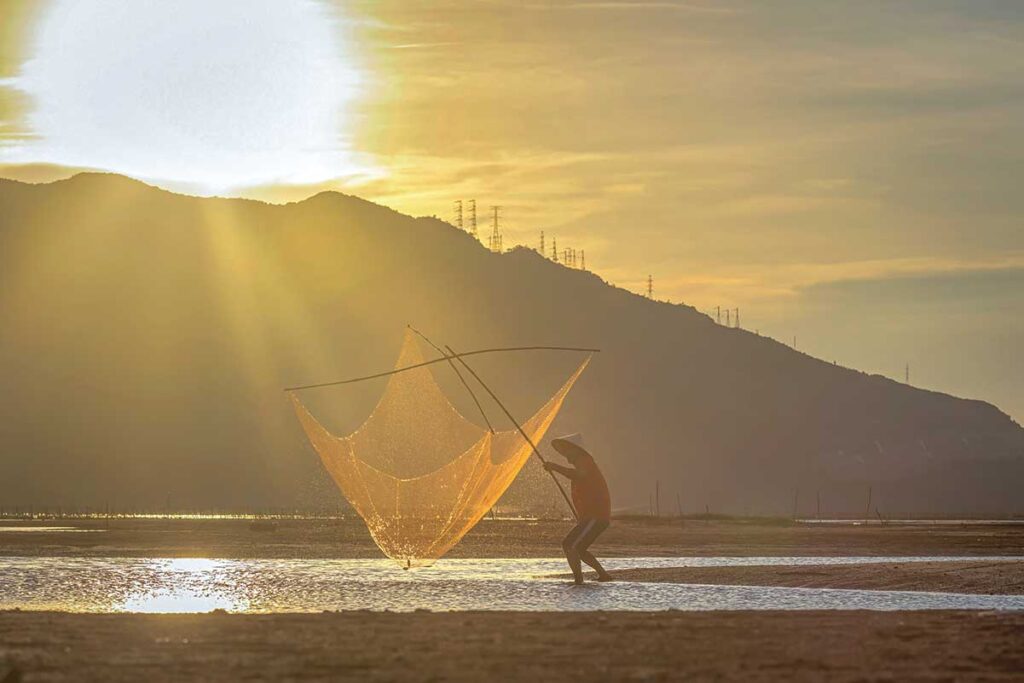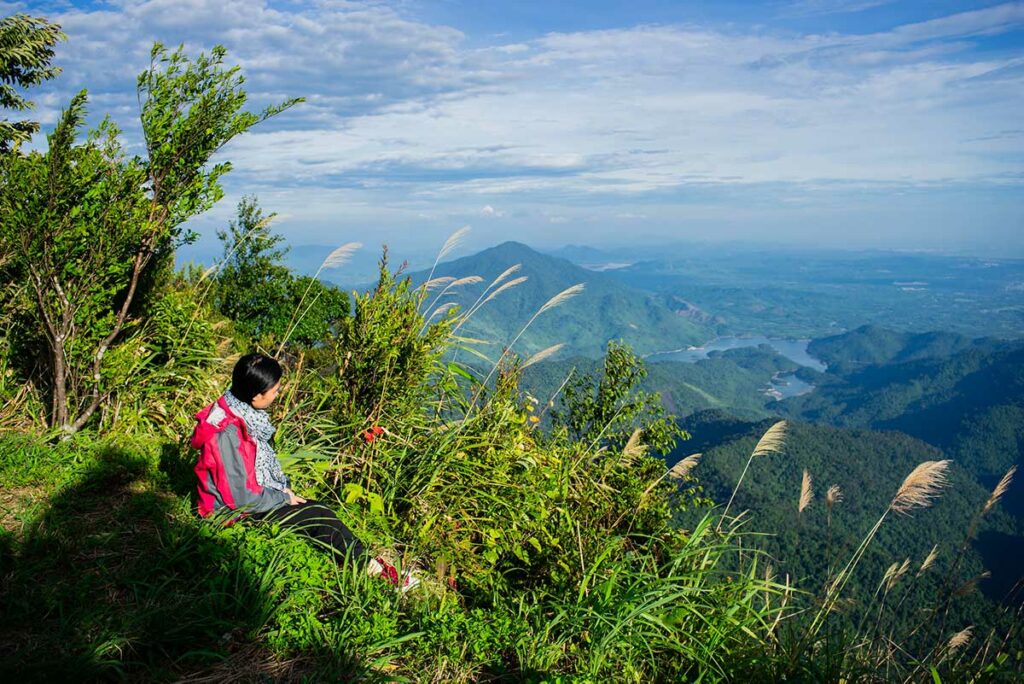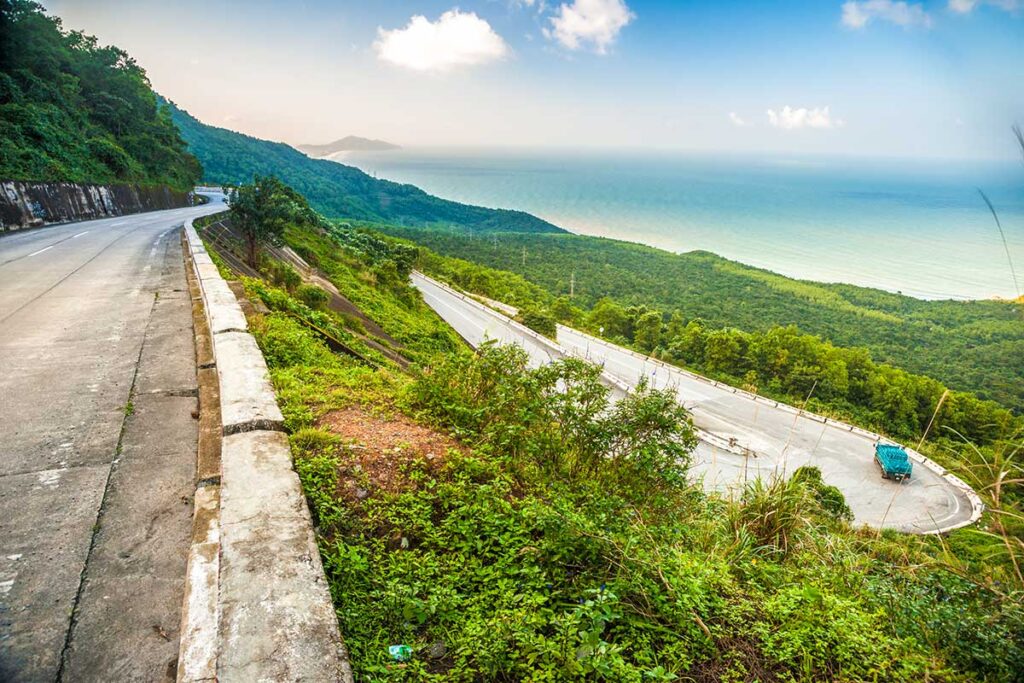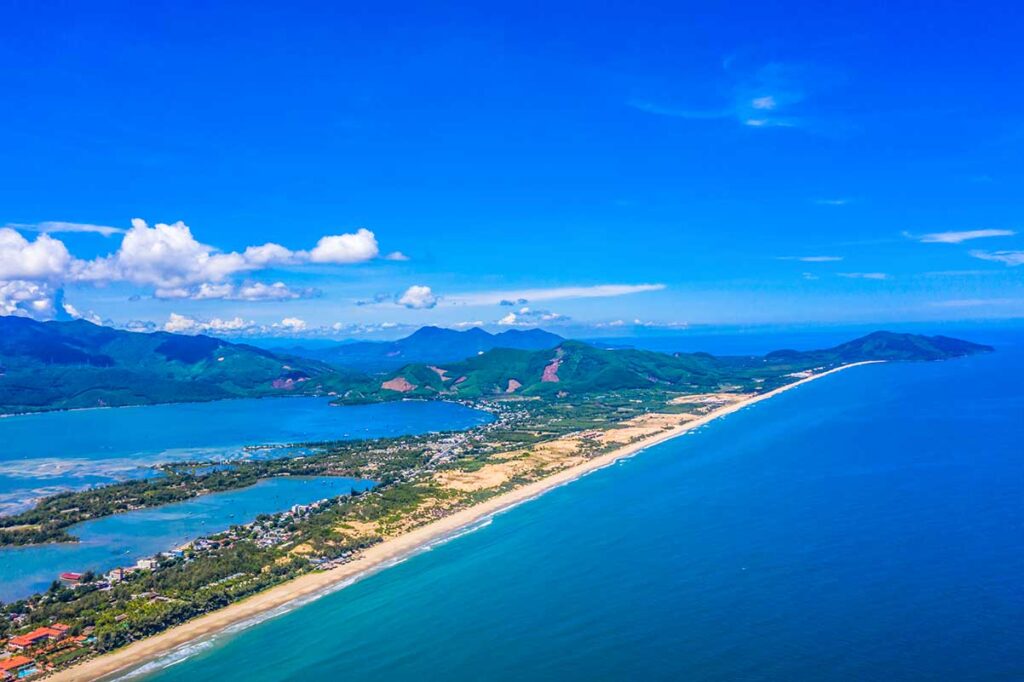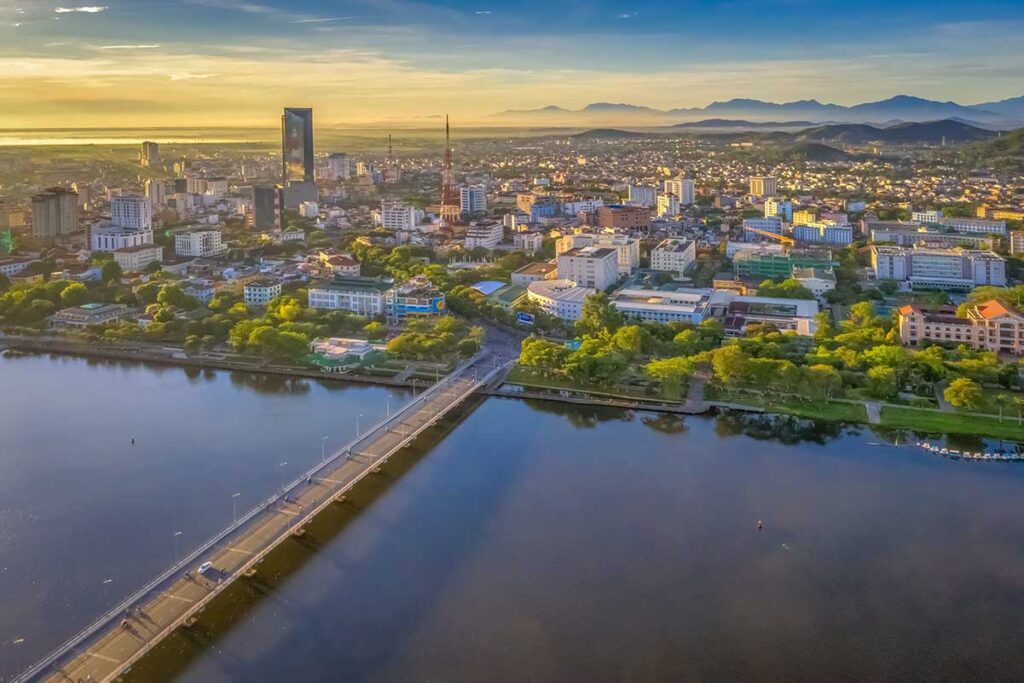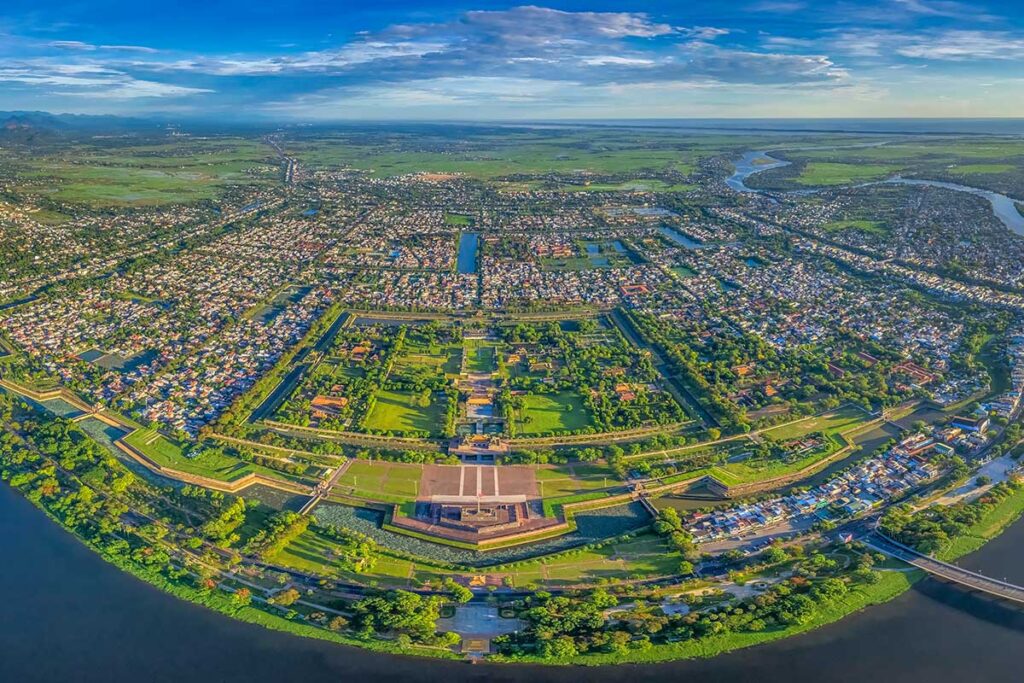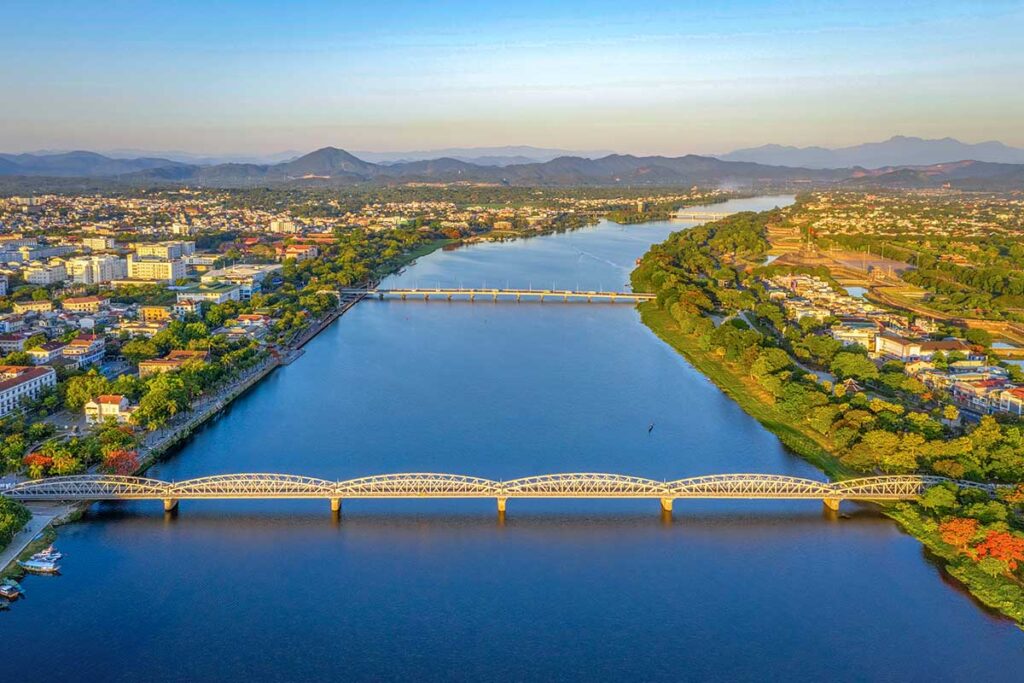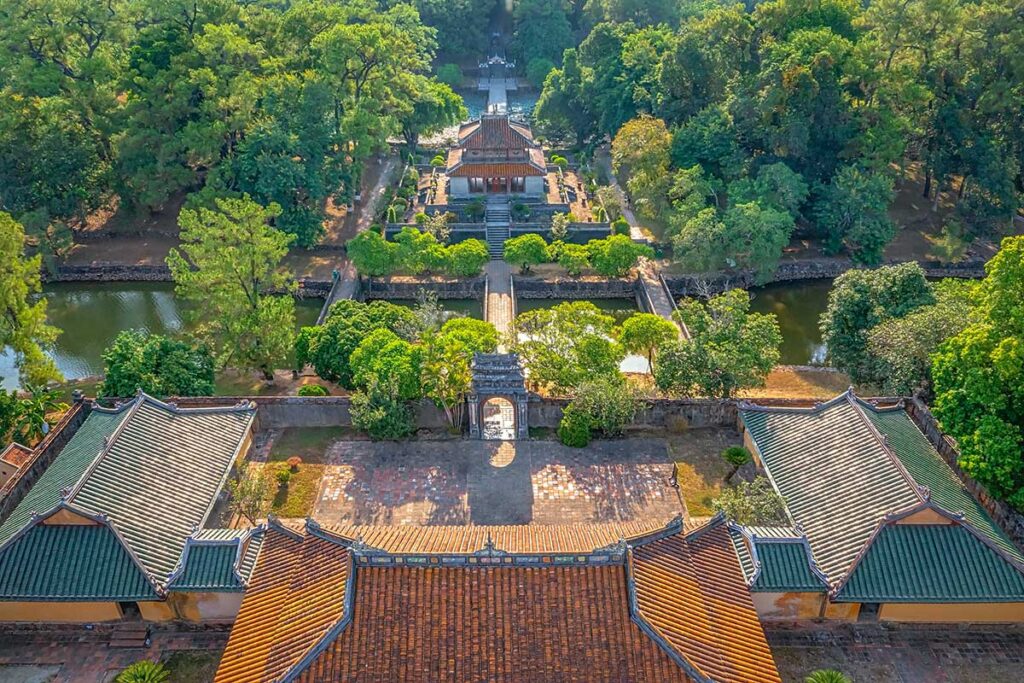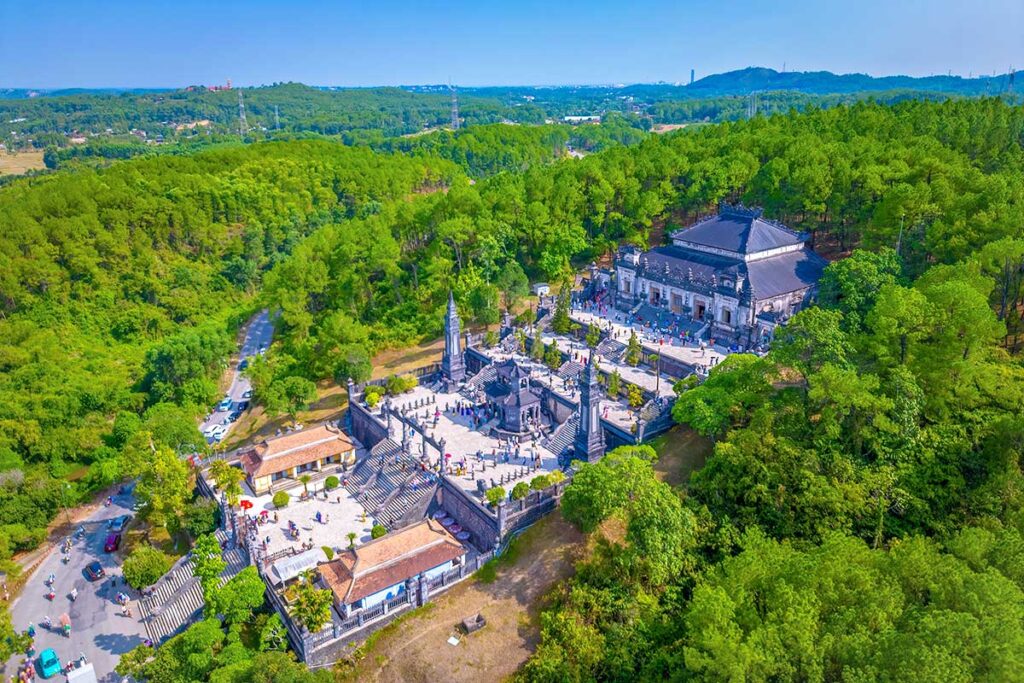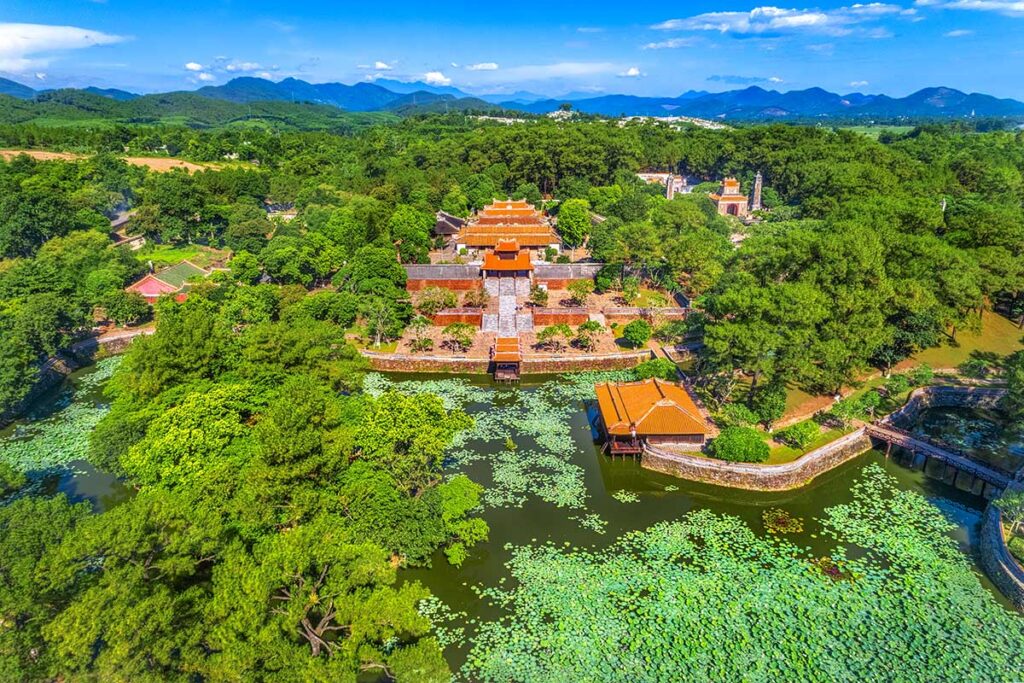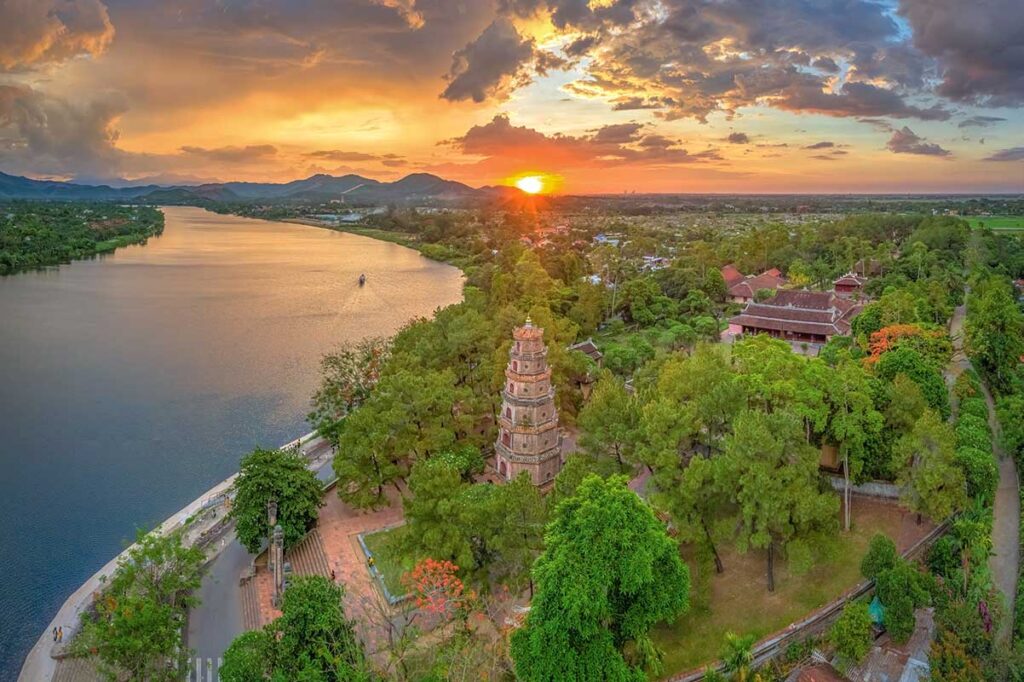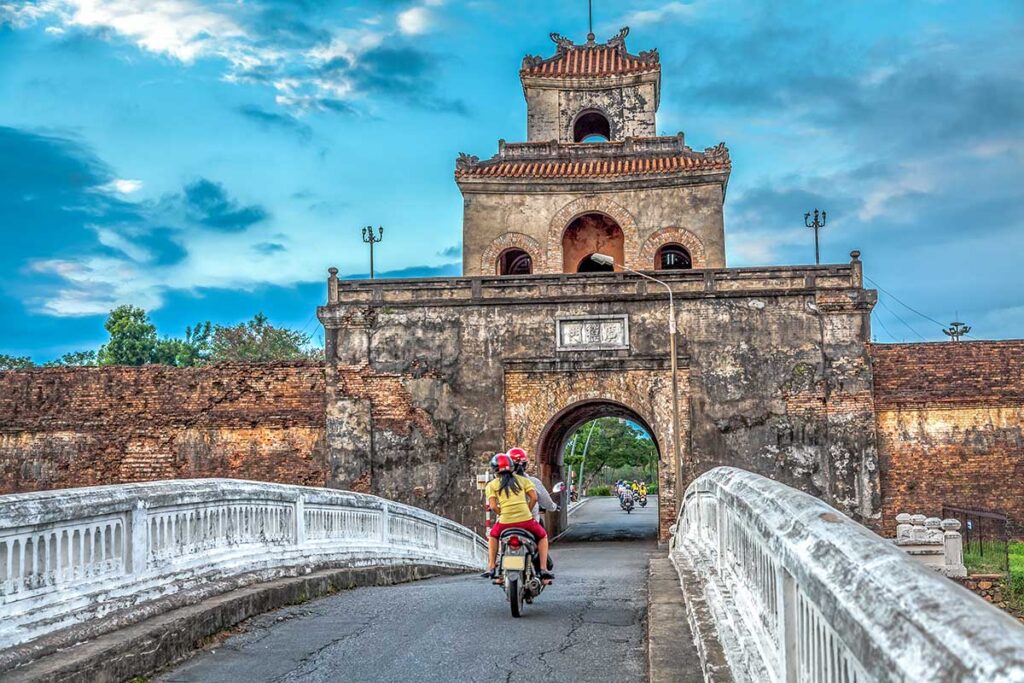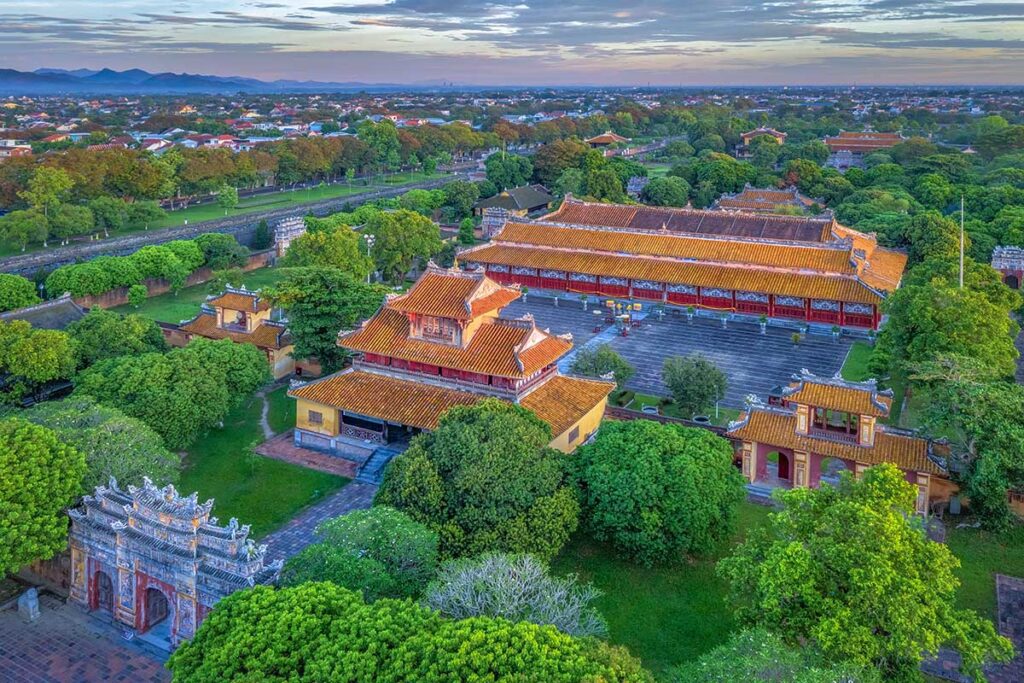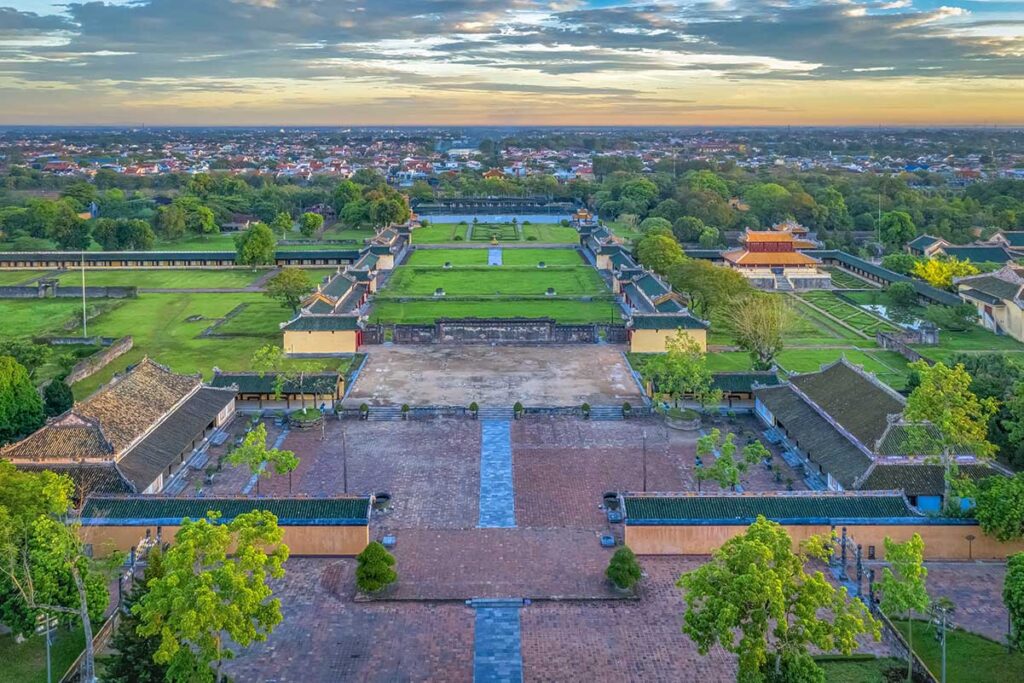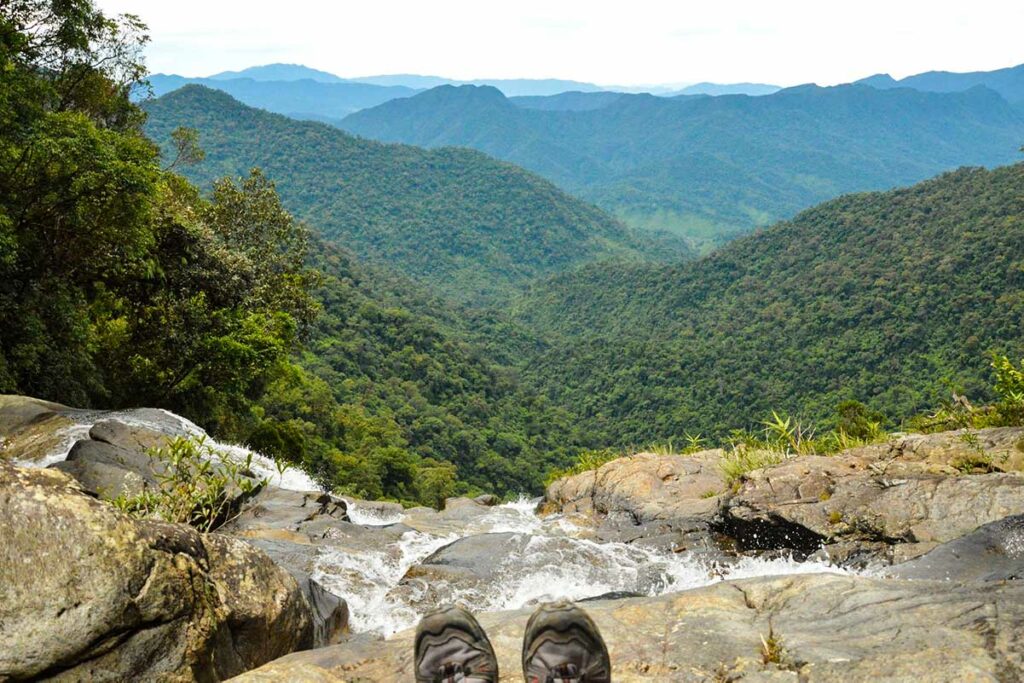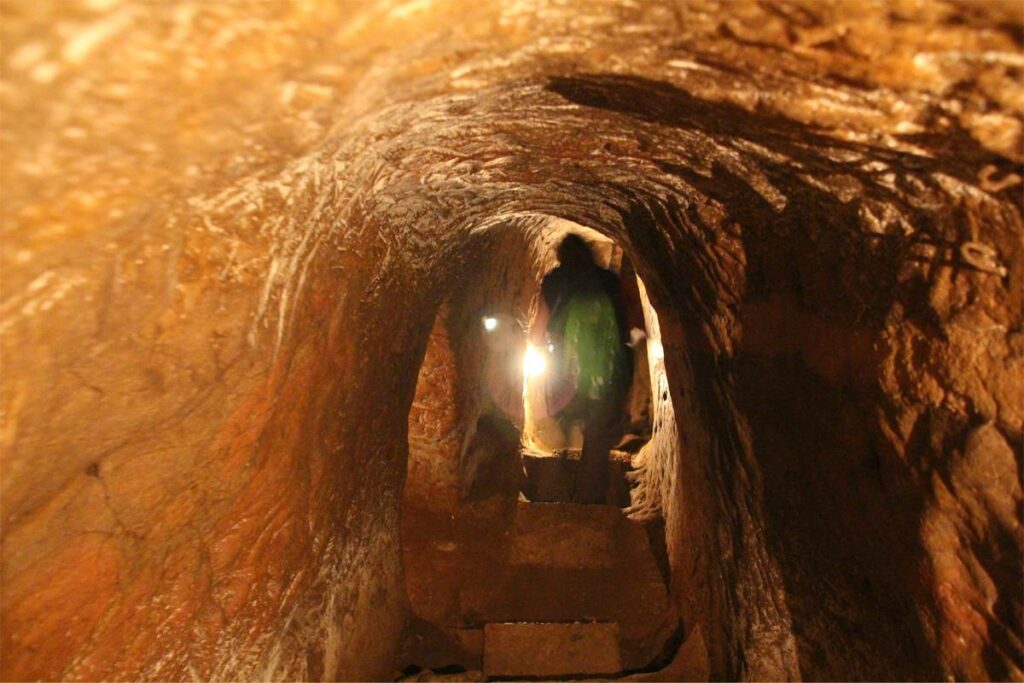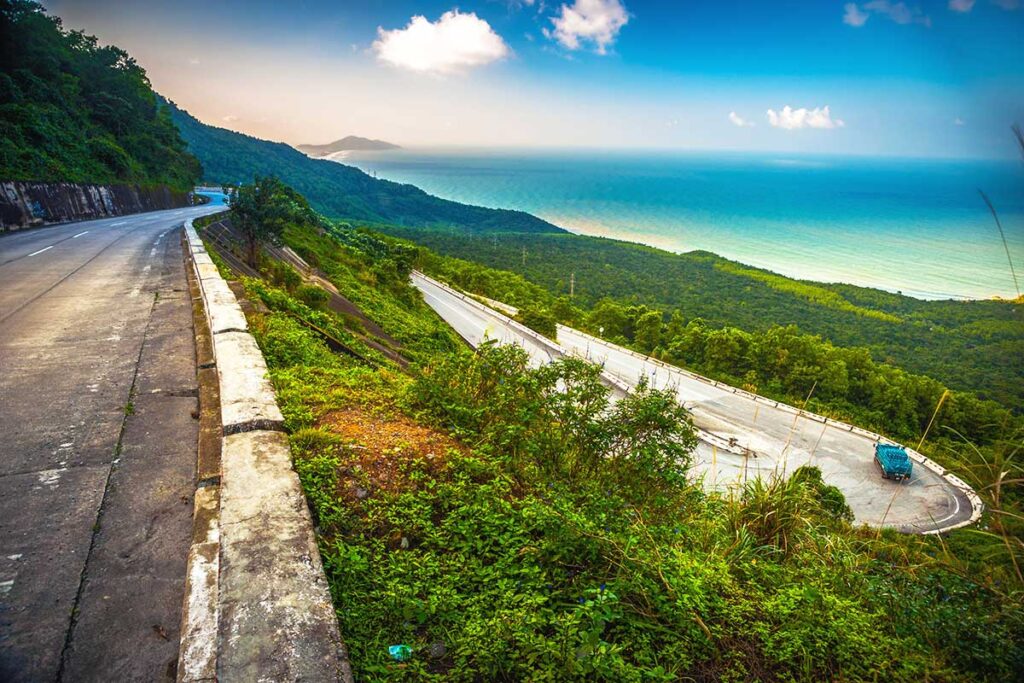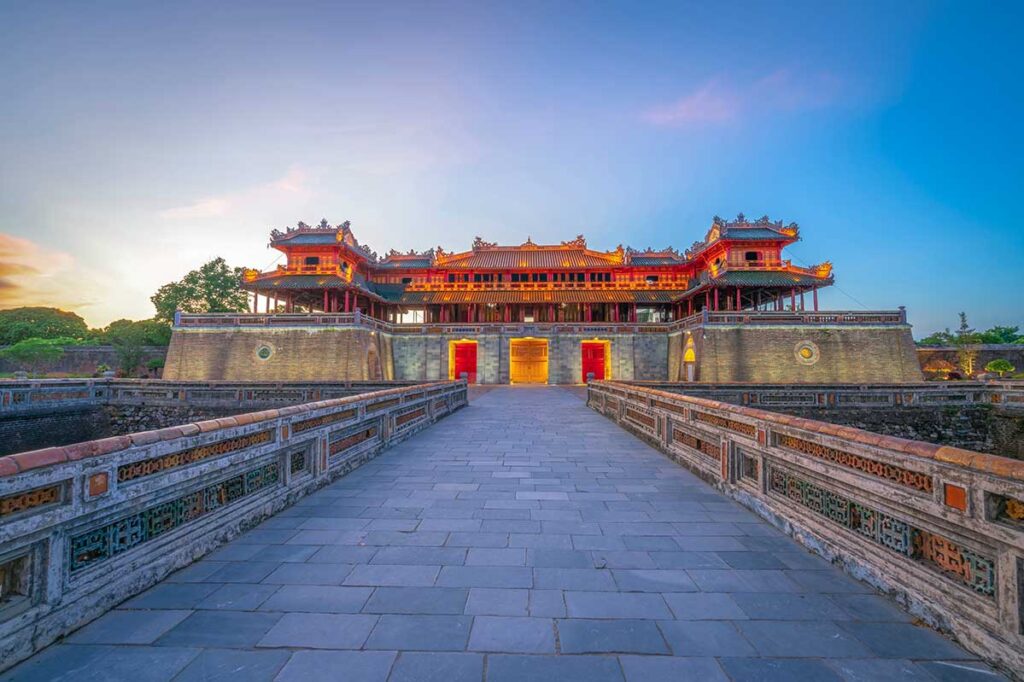Hue – Former Imperial Capital of Vietnam
Hue, once the imperial capital of Vietnam during the Nguyen Dynasty, is known for its UNESCO-listed citadel, royal tombs, and riverside pagodas that reflect centuries of history and culture. The name “Hue” can refer to both the compact city itself and the larger province of Thừa Thiên Huế, which stretches from the mountains to the coast.
In this guide, we use a map of Hue to zoom in step-by-step — starting from the wider province and its major landmarks, before focusing on the city and finally the Imperial Citadel.
Pro tip: Check the interactive map of Hue at the end of this guide — it includes not only the major sights listed here but also many smaller temples, markets, and viewpoints you can explore if you have extra time.
Map of Hue Province (largest view)
The name Hue often refers to the city itself, but it also belongs to the larger Thừa Thiên Huế Province, which stretches from the mountains in the west to the South China Sea in the east. On a Hue map, you’ll see that the province includes a mix of urban areas, countryside, coastline, lagoons, and mountains — and that several famous “Hue” attractions are actually outside the city proper. A province-level view helps you understand how sights like Lang Co Beach, Bach Ma National Park, and the Tam Giang Lagoon fit into your travel plans.
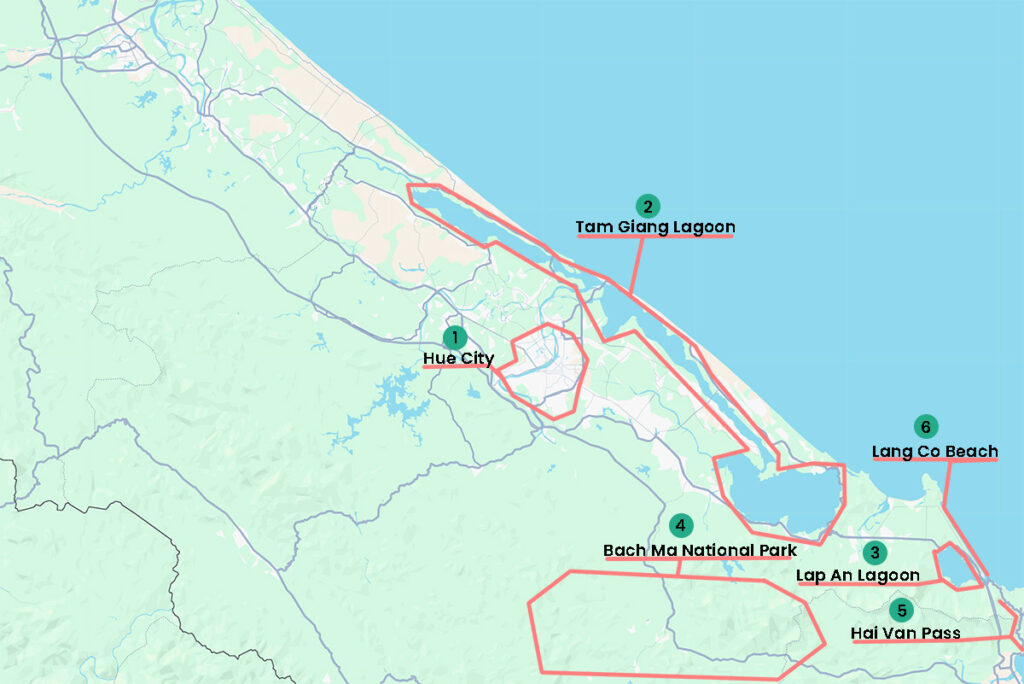
1. Hue City
Hue City is the cultural heart of the province and home to the UNESCO-listed Imperial Citadel, riverside pagodas, bustling markets, and most hotels and restaurants. Many royal tombs are located just outside the urban area but still within easy reach — for example, Khai Dinh Tomb is about 10 km from the city center, while Minh Mang Tomb is roughly 12 km away.
2. Tam Giang Lagoon
The Tam Giang Lagoon, north of Hue City, is part of the Tam Giang–Cầu Hai lagoon system, the largest in Southeast Asia. It is famous for its fishing villages, fresh seafood, and spectacular sunset views. Easy access points include Chuon Lagoon and Quang Loi Lagoon, both popular for photography and boat trips.
3. Lap An Lagoon
Lap An Lagoon lies near Lang Co and is framed by the mountains of Bach Ma National Park, creating one of the most photogenic landscapes in the province. Known for its calm, mirror-like water, it’s a favorite stop for photographers and travelers enjoying seafood restaurants along the shore.
4. Bach Ma National Park
Bach Ma National Park, about 1–1.5 hours south of Hue City, offers cooler mountain air, dense forest trails, and impressive waterfalls. Once a French hill station, it still has remnants of colonial villas alongside panoramic viewpoints over the coast and lagoons.
5. Hai Van Pass
The Hai Van Pass is a winding coastal road linking Hue Province with Da Nang, known for sweeping views of the sea, mountains, and Lang Co Bay. It’s often included in one-way journeys between Hue and Hoi An or Da Nang, either by car, jeep, or motorbike.
6. Lang Co Beach
Lang Co Beach, just south of Hue and close to the Hai Van Pass, is a long crescent of sand backed by mountains. It’s popular for calm swimming conditions, mid-range resorts, and shoreline seafood restaurants — and is often combined with a visit to Lap An Lagoon.
Map of Hue City (zoom in)
Hue City’s main attractions are grouped into distinct areas, which makes it easier to plan your itinerary and avoid unnecessary backtracking. On a map of Hue City, you’ll see the Imperial Citadel to the north of the Perfume River, most royal tombs to the south, and the city center with hotels, markets, and restaurants in between.
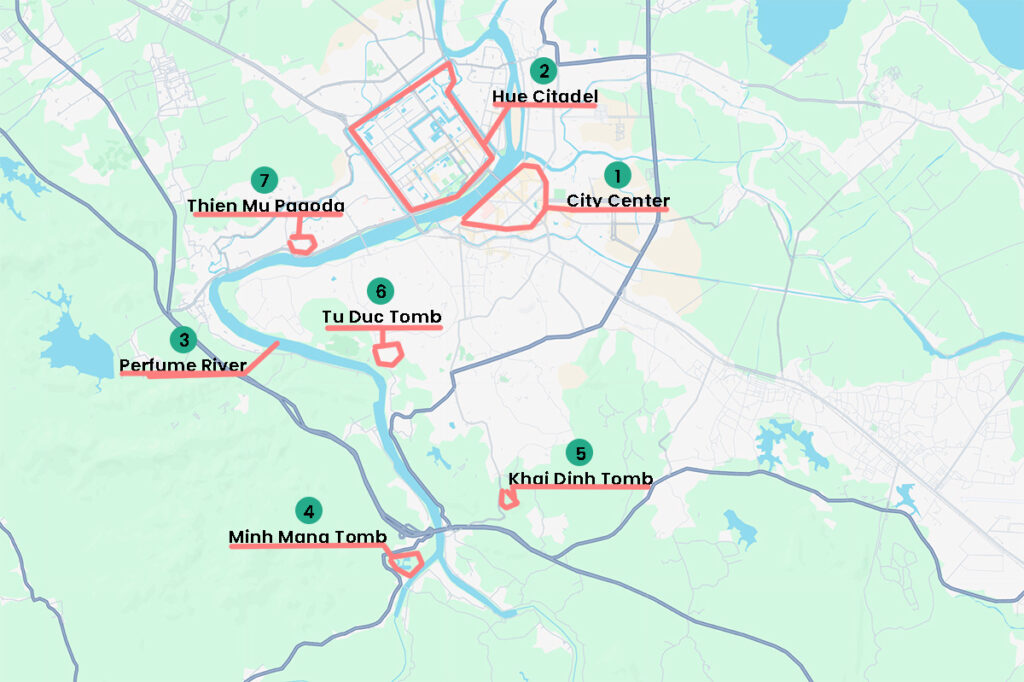
1. City Center
The Hue City Center is the main hub for accommodation, dining, and nightlife, with most hotels and guesthouses located here. Streets like Vo Thi Sau, Chu Van An, and Pham Ngu Lao form a lively walking area in the evenings, lined with cafés, bars, and street food stalls. It’s also a convenient base for exploring both the Citadel and the royal tombs.
2. Hue Citadel
The Hue Citadel is a vast walled complex north of the Perfume River that encloses the Imperial City and the Forbidden Purple City. Built in the early 19th century by the Nguyen emperors, it is surrounded by a moat and can take several hours to explore fully. Key entrances include Ngo Mon Gate on the south side, facing the river.
3. Perfume River
The Perfume River flows through the heart of Hue, linking many of the city’s historic landmarks. It runs past the Citadel on the north bank and most of the royal tombs to the south, with boat cruises departing from Trang Tien Bridge or Toa Kham Wharf. The river is especially scenic at sunset or during a traditional music performance.
4. Minh Mang Tomb
The Minh Mang Tomb lies about 12 km southwest of the city, set in a landscaped park with lakes, bridges, and courtyards. Built in the mid-19th century, it is known for its harmonious blend of architecture and nature, making it one of the most picturesque of the Nguyen royal tombs.
5. Khai Dinh Tomb
The Khai Dinh Tomb is located on a hillside south of the Perfume River, about 10 km from the city center. Completed in 1931, it combines Vietnamese and European architectural styles and is famous for its richly decorated interiors and panoramic views from the upper terrace.
6. Tu Duc Tomb
The Tu Duc Tomb is set in a pine-covered area about 6 km from central Hue, with pavilions, ponds, and a large lake. Built as both a palace and a final resting place, it reflects the emperor’s love for poetry and nature, offering a peaceful escape from the city.
7. Thien Mu Pagoda
The Thien Mu Pagoda is a historic seven-story pagoda overlooking the Perfume River, west of the Imperial City. Dating back to 1601, it is one of Hue’s most iconic landmarks and can be reached by road or via a scenic boat trip from the city center.
Map of Hue Citadel (zoom in further)
A Hue Citadel map is useful for navigating this vast UNESCO-listed complex, with its moats, defensive walls, gardens, and ceremonial buildings. The Citadel has three distinct layers: the outer walls enclosing the entire complex, the Imperial City where official and ceremonial functions took place, and the Forbidden Purple City, once the private residence of the emperor and his family.
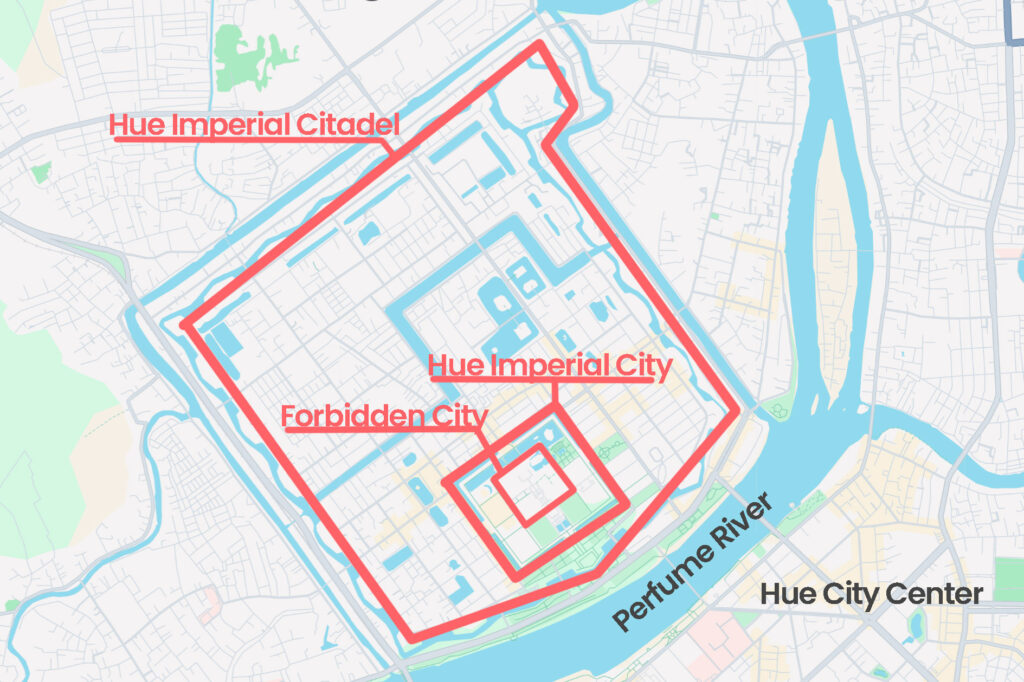
1. Walls and Gates of the Citadel
The walls of Hue Citadel form a nearly square layout, each side about 2 km long, surrounded by a wide moat. There are 10 main gates, with Ngo Mon Gate on the south side serving as the grand main entrance to the Imperial City. Other gates like Thuong Tu Gate and Hien Nhon Gate offer alternative access points, though most visitors enter through Ngo Mon.
2. Hue Imperial City
The Hue Imperial City occupies the central area within the Citadel walls and was the administrative and ceremonial heart of the Nguyen Dynasty. Here you’ll find important sites such as Thai Hoa Palace, The Mieu Temple, and Hien Lam Pavilion, connected by wide courtyards and gardens.
See our detailed guide to the Hue Imperial City for a map showing all main temples, palaces, and historical buildings within, including the Forbidden Purple City.
3. Hue Forbidden Purple City
The Forbidden Purple City, located within the Imperial City, was reserved exclusively for the emperor, his consorts, and close attendants. Much of it was destroyed during wars in the mid-20th century, but ongoing restoration projects have rebuilt sections like Can Chanh Palace and the surrounding courtyards, giving a glimpse into its former grandeur.
Interactive map of Hue
Use our interactive map of Hue to see the exact locations of temples, tombs, palaces, and other highlights mentioned (and not mentioned) in this guide. You can zoom in on each area, get directions, and plan your route for exploring the city and surrounding attractions.
Getting around Hue
Looking at a map of Hue gives you a good idea of where the city’s main areas and attractions are, but it doesn’t always show how easy — or challenging — it is to travel between them. Royal tombs are spread out along the Perfume River, beaches and lagoons sit far from the city center, and mountain parks can take over an hour to reach. Here’s how to get around to the different areas we’ve just covered.
Day trips by private car or tour
For destinations outside the city, such as Bach Ma National Park, a private car with driver or an organized day tour is the most comfortable option. These trips typically include hotel pickup, flexible timing, and multiple sightseeing stops along the way.
Sightseeing transfers
If you’re traveling between Hue and Da Nang or Hoi An, consider turning the journey into a sightseeing transfer by private car or on the back of an Easy Rider motorbike. Popular stops include Lang Co Beach, Lap An Lagoon, and the Hai Van Pass.
Taxi and Grab
Within the city, taxi and Grab (ride-hailing app) are convenient for reaching markets, pagodas, and the Imperial Citadel. For tombs further from the center, it’s best to arrange for the driver to wait, as return taxis can be harder to find.
Tours or car rental with driver
A private car with driver is also a great choice for a day of sightseeing within the city and its surroundings. This allows you to cover more ground than by taxi alone, visiting the Imperial City, pagodas, and multiple tombs without worrying about transport between them.
Explore Hue with us
Make the most of your day with our Hue tours, combining the Imperial City, royal tombs, pagodas, and more in one well-planned itinerary — with transport, local guide, and all logistics taken care of.
Motorbike rental
Motorbike rental gives you the freedom to visit nearby attractions like the royal tombs, or take longer rides to Lang Co Beach and the Hai Van Pass. One-way rentals to Da Nang or Hoi An are also possible. However, riding in Vietnam should only be attempted by those with a valid license and prior experience.
